White Terror In Tulsa? History Of Racial Violence Haunts City
By Bryan Crawford -The Final Call- | Last updated: Sep 29, 2016 - 5:31:55 PMWhat's your opinion on this article?
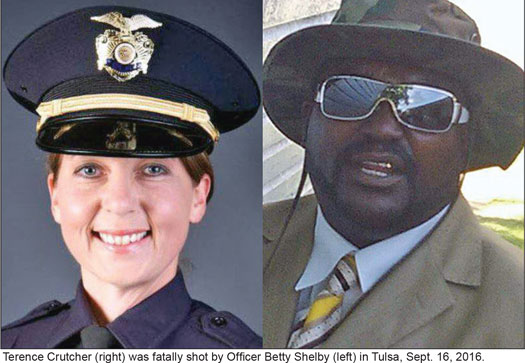
|
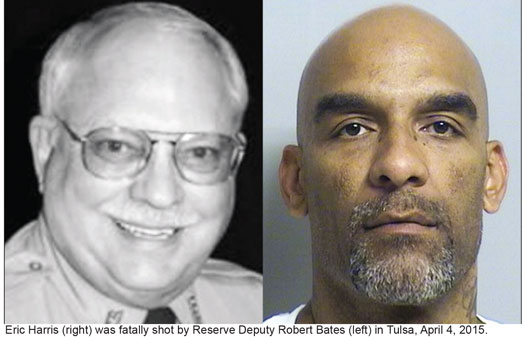
|
The shooting of an unarmed Black man by a White police officer added another name to the long list of those whose lives have been taken by those sworn to protect those living in the communities they serve.
Terence Crutcher was fatally shot by Tulsa police officer Betty Shelby in mid- September and days later the Oklahoma cop was charged in the shooting. But the killing of the Black man resurrected old fears and recent memories of how Whites have killed Blacks in this Midwestern city.
The Crutcher death Sept. 16 reopened wounds in a community that, according to local residents, has never fully healed since the bombing of historic “Black Wall Street” in the Greenwood District, sparking a race riot where hundreds of Black people were massacred in the span of just a few hours.
In the 95 years that have passed since that fateful day in June, 1921, the city of Tulsa has experienced a number of violent encounters that have resulted in the deaths of Blacks at the hands of Whites. Terence Crutcher’s name is now one of many in a year’s long string of shooting deaths of Blacks by White police officers.
“In my opinion, the Black people in Tulsa are afraid of the White people here,” said Jamal Ali Muhammad, leader of the Nation of Islam study group in Tulsa. “You can tell that the Black Wall Street situation hovers over the Black people here like a dark cloud and I think they’re very afraid of White folks.”
Pastor Anthony Scott, who heads the First Baptist Church of North Tulsa, echoed the sentiments of Mr. Ali.
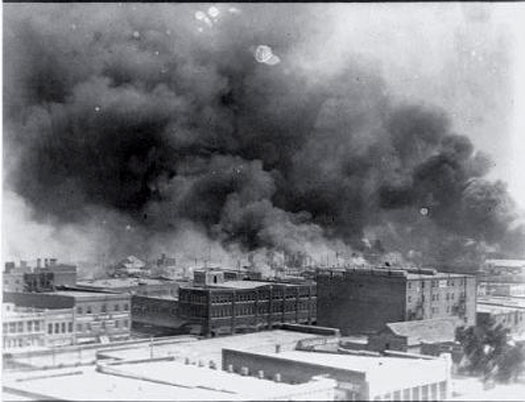
Black America’s most prosperous community, Black Wall Street in Tulsa, Oklahoma, went up in flames June 1, 1921, in the KKK-led Tulsa Race Riot. According to Wikipedia, “During the 16 hours of the assault, over 800 people were admitted to local hospitals with injuries, an estimated 10,000 were left homeless, and 35 city blocks composed of 1,256 residences were destroyed by fire caused by bombing.”
|
“In my opinion, the Black community in Tulsa has never recovered from the Black Wall Street situation,” he said. “It’s led to a sense of passiveness from African Ameri-cans here. It just seems like we’ve been kept in our place. However, this situation with Mr. Crutcher, along with the Good Friday shootings in 2011 of five Black people— three of whom died—by two White men, have caused us, particularly the young people, to begin speaking up and saying what needs to be said.”
Mr. Crutcher, who was having car trouble when his SUV was stopped and stranded in the middle of the road, was shot and killed by Off. Shelby, almost immediately after he was tasered by another officer, Tyler Turnbough. Videos of the incident were released to the public almost 48 hours later which showed Mr. Crutcher with his hands up, in a surrender position, shortly before his life was taken. This prompted outrage from the Black community in Tulsa which sparked days of protests and calls for the immediate arrest of Off. Shelby and charges filed against her.
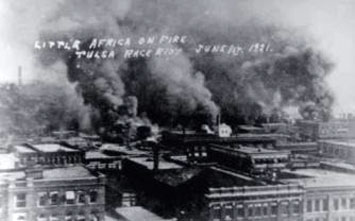
These are Black-built, Black-owned buildings that were occupied by bustling Black businesses before envious Whites rioted and destroyed them.
|
Off. Shelby was arrested Sept. 22 and formally charged with first degree manslaughter. She was released on $50,000 bond.
Benjamin Crump, the famed attorney who represented the family of Mike Brown in Ferguson, Mo., is also representing the Crutcher family. Mr. Crump told The Final Call, “Through the vivid slow motion video witnessed around the world, America once again witnessed the tragic death of another person of color, gunned down senselessly by an officer who swore to protect and serve.”
“Make no mistake, it was clear from the beginning that charges were necessary in this case. The officer responsible for the death of Terence Crutcher had to be brought to justice and be held accountable for her actions. We remain optimistic that the state’s attorney will do his job and vigorously prosecute the officer to the fullest extent of the law, bringing some form of justice to the Crutcher family,” he added.
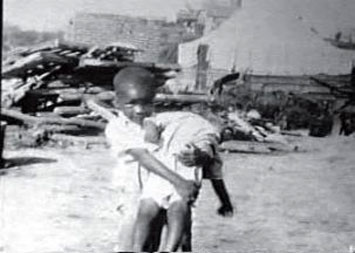
A child rescuer on June 1, 1921 – with Whites out to kill them, Blacks could rely on no one but each other.
|
In the wake of the Crutcher shooting, on the ground, community reaction has been split between Blacks representing the city’s older residents, and their younger counterparts.
“The young people here are very upset,” said Mr. Ali who has attended several protests. “Some of the older ones have preached calm, but the youth are ready to explode.”
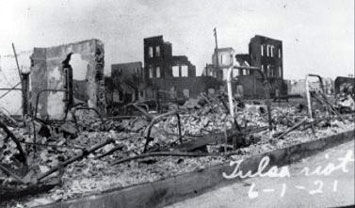
At the end of the day, June 1, 1921, this is what remained of Black Wall Street. Lost forever were over 600 successful businesses, including 21 churches, 21 restaurants, 30 grocery stores, two movie theaters, a hospital, a bank, a post office, libraries, schools, law offices, a half dozen private airplanes and a bus system.
|
Mr. Lewis, who represents Tulsa’s younger generation, feels the city is on the brink of civil unrest, even with charges being filed against Off. Shelby. He feels these charges could give some in the community the false sense that justice has been served.
“Justice can look as if we have leverage [with charges being filed], but we have to get to the point where we know, as a community, what we want specifically in terms of an outcome, and not just settle for whatever they decide to give us,” Mr. Lewis said.
“A lot of times we’ll settle for a conviction, but that will only give us an emotional high on something that’s supposed to happen anyway,” Mr. Lewis added. “You shoot and kill somebody, you’re supposed to go to jail. But from my perspective, real justice is the implementation of new policies, more African Americans serving as police officers in communities where the people there look like them. I want drug tests and a psychological evaluation given to any officer who discharges their gun for any reason. That’s what justice looks like for me.”
The shooting of Terence Crutcher in Tulsa was followed by the police shooting of Keith Lamont Scott, another unarmed Black man, in Charlotte, N.C. Both were preceded by the shooting of a 13-year-old Black boy by a police officer in Columbus, Ohio. These incidents and many more, both in the past as well as in the future, beg the question, how much more can the Black community take?
INSIDE STORIES AND REVIEWS
-
-
About Harriett ... and the Negro Hollywood Road Show
By Rabiah Muhammad, Guest Columnist » Full Story -
Skepticism greets Jay-Z, NFL talk of inspiring change
By Bryan 18X Crawford and Richard B. Muhammad The Final Call Newspaper @TheFinalCall » Full Story -
The painful problem of Black girls and suicide
By Charlene Muhammad -National Correspondent- » Full Story -
Exploitation of Innocence - Report: Perceptions, policies hurting Black girls
By Charlene Muhammad -National Correspondent- » Full Story -
Big Ballin: Big ideas fuel a father’s Big Baller Brand and brash business sense
By Bryan Crawford -Contributing Writer- » Full Story






 Click Here Stay Connected!
Click Here Stay Connected!








